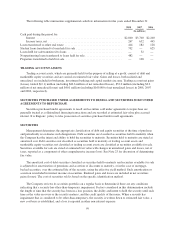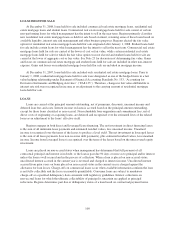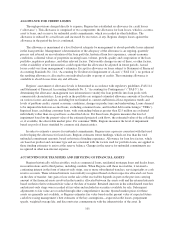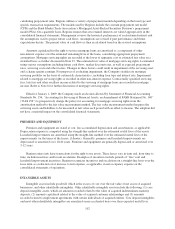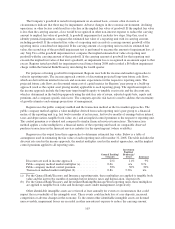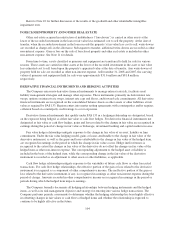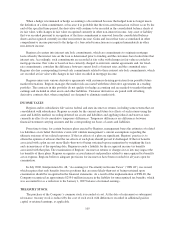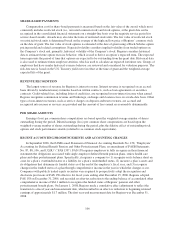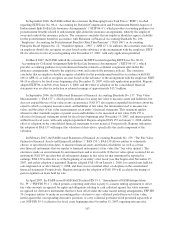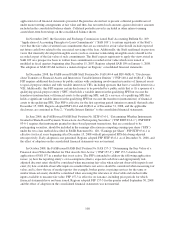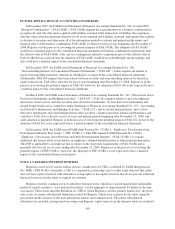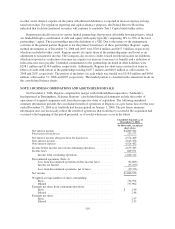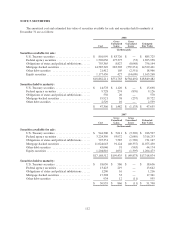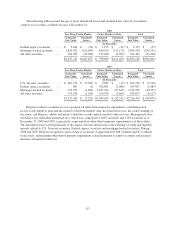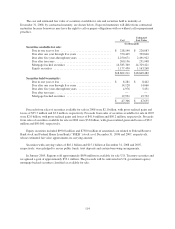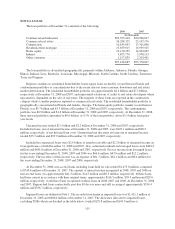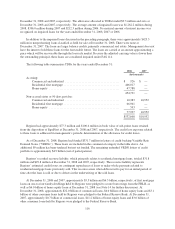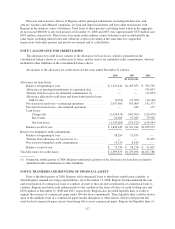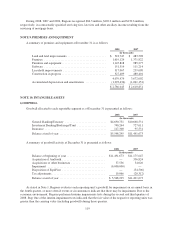Regions Bank 2008 Annual Report Download - page 119
Download and view the complete annual report
Please find page 119 of the 2008 Regions Bank annual report below. You can navigate through the pages in the report by either clicking on the pages listed below, or by using the keyword search tool below to find specific information within the annual report.FUTURE APPLICATION OF ACCOUNTING STANDARDS
In December 2007, the FASB issued Statement of Financial Accounting Standards No. 141 (revised 2007),
“Business Combinations” (“FAS 141(R)”). FAS 141(R) requires the acquiring entity in a business combination to
recognize all (and only) the assets acquired and liabilities assumed in the transaction; establishes the acquisition-
date fair value as the measurement objective for all assets acquired and liabilities assumed; and requires the acquirer
to disclose to investors and other users all of the information needed to evaluate and understand the nature and
financial effect of the business combination. FAS 141(R) is effective for fiscal years beginning after December 15,
2008. Regions is in the process of reviewing the potential impact of FAS 141(R). The adoption of FAS 141(R)
could have a material impact to the consolidated financial statements for business combinations entered into after
the effective date of FAS 141(R). Also, any tax contingencies related to acquisitions prior to the effective date of
FAS 141(R) that are resolved after the adoption of FAS 141(R) would be recorded through current earnings, and
also could have a material impact to the consolidated financial statements.
In December 2007, the FASB issued Statement of Financial Accounting Standards No. 160,
“Noncontrolling Interests in Consolidated Financial Statements” (“FAS 160”), which requires all entities to
report noncontrolling (minority) interests in subsidiaries as equity in the consolidated financial statements.
Additionally, FAS 160 requires that transactions between an entity and noncontrolling interests be treated as
equity transactions. FAS 160 is effective for fiscal years beginning after December 15, 2008. Regions is in the
process of reviewing the potential impact of FAS 160; however, the adoption of FAS 160 is not expected to have
a material impact to the consolidated financial statements.
In March 2008, the FASB issued Statement of Financial Accounting Standards No. 161, “Disclosures about
Derivative Instruments and Hedging Activities” (“FAS 161”). FAS 161 requires entities to provide enhanced
disclosures about (a) how and why an entity uses derivative instruments, (b) how derivative instruments and
related hedged items are accounted for under Statement of Financial Accounting Standards No. 133, “Accounting
for Derivative Instruments and Hedging Activities” (“FAS 133”) and its related interpretations, and (c) how
derivative instruments and related hedged items affect an entity’s financial position, financial performance and
cash flows. FAS 161 is effective for fiscal years and interim periods beginning after November 15, 2008, and
early adoption is permitted. Regions is in the process of reviewing the potential impact of FAS 161; however, the
adoption of FAS 161 is not expected to have a material impact to the consolidated financial statements.
In December 2008, the FASB issued FASB Staff Position No. 132(R)-1, “Employers’ Disclosures about
Postretirement Benefit Plan Assets” (“FSP 132(R)-1”). This FSP amends FASB Statement No. 132(R),
“Employer’s Disclosures about Pensions and Other Postretirement Benefits” (“FAS 132(R)”), to require
additional disclosures about assets held in an employer’s defined benefit pension or other postretirement plan.
This FSP is applicable to an employer that is subject to the disclosure requirements of FAS 132(R) and is
generally effective for fiscal years ending after December 15, 2009. Regions is in the process of reviewing the
potential impact of FSP 132(R)-1; however, the adoption of FSP 132(R)-1 is not expected to have a material
impact to the consolidated financial statements.
NOTE 2. VARIABLE INTEREST ENTITIES
Regions is involved in various entities that are considered to be VIEs, as defined by FASB Interpretation
No. 46(R) (“FIN 46 (R)). Generally, a VIE is a corporation, partnership, trust or other legal structure that either
does not have equity investors with substantive voting rights or has equity investors that do not provide sufficient
financial resources for the entity to support its activities.
Regions owns the common stock of subsidiary business trusts, which have issued mandatorily redeemable
preferred capital securities (“trust preferred securities”) in the aggregate of approximately $1 billion at the time
of issuance. These trusts meet the definition of a VIE of which Regions is not the primary beneficiary; the trusts’
only assets are junior subordinated debentures issued by Regions, which were acquired by the trusts using the
proceeds from the issuance of the trust preferred securities and common stock. The junior subordinated
debentures are included in long-term borrowings and Regions’ equity interests in the business trusts are included
109


